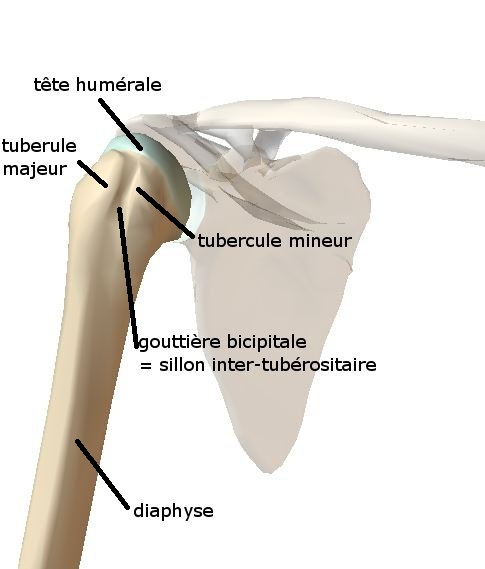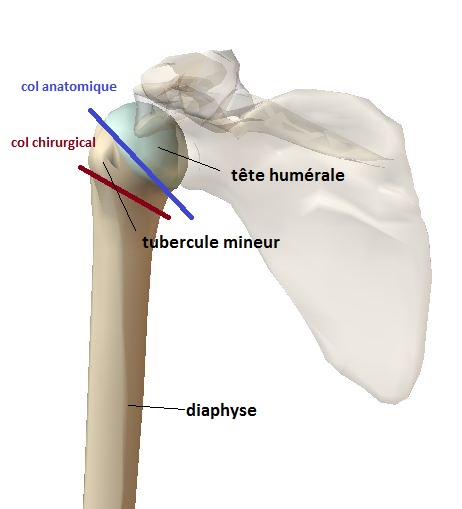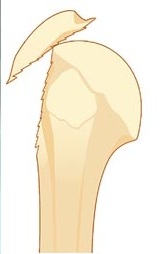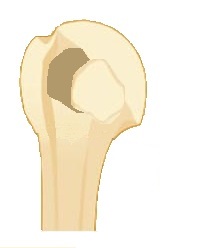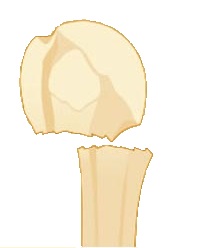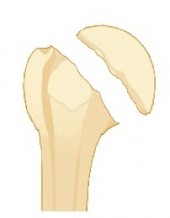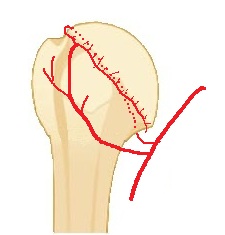Simple fractures
We will describe fractures as ‘simple’ when they have two fragments, as opposed to complex fractures (which combine several types of simple fractures at the same time).
A simple fracture can separate the tuberosities or cervix from the humerus.
The challenge of tuberosities is the function of the cap
For fractures of the cervix, in addition to the displacement limiting the good function of the shoulder, there is a risk of necrosis of the humeral head and therefore of sagging of the latter with risk of early osteoarthritis and rapidly progressive (indication of shoulder prosthesis )

